Posts for: architect
Oct 25, 2011 23:10:25 #
Top photo was on St. Maarten, second was on St. Johns in the US Virgin Islands, and the bottom was on the Royal Caribbean cruiseship Oasis of the Seas.
Oct 25, 2011 23:07:36 #
JacLee. If your camera does not have a selection for RAW, then you do not need to worry about what it is in the immediate future. As you become more educated and experienced, or if your camera does support RAW, you will want to know more about it, and a lot is explained in the posts above.
Shooting naked is fun if the weather is nice, and if you have no inhibitions. I would advise having some clothes nearby though in case the local police are not so accommodating.
Shooting naked is fun if the weather is nice, and if you have no inhibitions. I would advise having some clothes nearby though in case the local police are not so accommodating.
Oct 25, 2011 22:25:23 #
I would appreciate all constructive criticisms and comments on these images I took last week on a cruiseship.
I am posting to introduce my work to this site, as requested.
I am posting to introduce my work to this site, as requested.
Palms on St, Maarten in the Caribbean
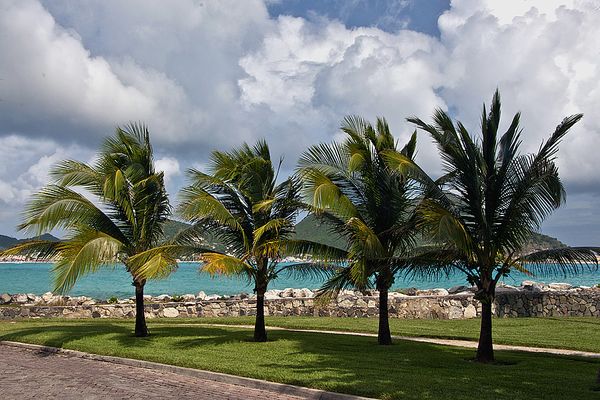
Trunk Bay Beach on St Johns, USVI
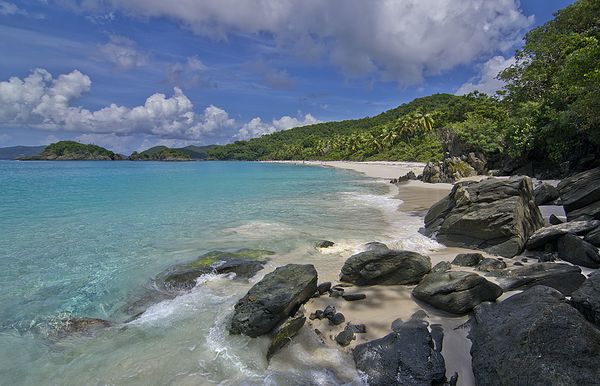
Stairway on Oasis of the Seas cruiseship
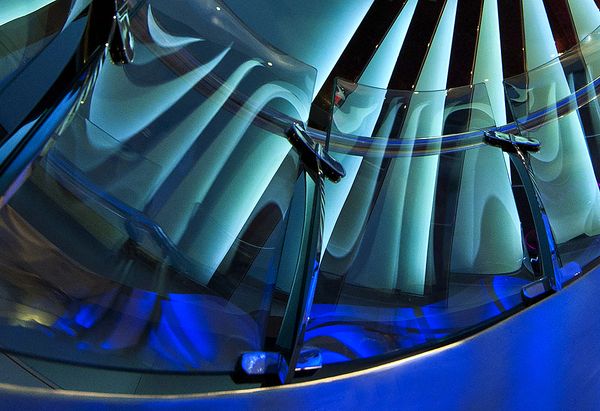
Oct 25, 2011 21:20:53 #
Rudeness, name calling and picking at each other until one or both are angry seems to be an unavoidable characteristic of the Internet, where one is anonymous. Very few would be such a**holes if they had to address you face to face. These people are cowards at best.
Oct 25, 2011 21:14:02 #
Lomography is an anti-technology aesthetic and is closely related to those who do "serious" street photography on cell phones. Ironically, the cell phone cameras are getting close to the point and shoots in quality.
If we accept photography as a creative art form, it is hypocritical to insist on the highest technical standards in the photographs themselves. Those images are not competing for the cover of Outdoor Photographer, after all.
If we accept photography as a creative art form, it is hypocritical to insist on the highest technical standards in the photographs themselves. Those images are not competing for the cover of Outdoor Photographer, after all.
Oct 25, 2011 20:24:49 #
Janice. I am new to this site, but not new to photography or to constructive criticism, which I love to give. I really believe that a good critique of the technical and/or aesthetic merits and faults of an image can be a great learning experience. I also have hated being criticized in the past until I realized they were right.
To avoid repeating much of what has been said above, I agree that any artist needs to develop a thick skin and an open mind. Try to ignore the style in which the constructive criticism (CC) is given and look for the essence that can help you improve your work. I have learned a tremendous amount from CC in the past few years, and I though I knew everything before that. I was so wrong.
To avoid repeating much of what has been said above, I agree that any artist needs to develop a thick skin and an open mind. Try to ignore the style in which the constructive criticism (CC) is given and look for the essence that can help you improve your work. I have learned a tremendous amount from CC in the past few years, and I though I knew everything before that. I was so wrong.
Oct 25, 2011 19:32:26 #
Thanks liv2paddle.
With any artistic discipline, knowing the strengths and weaknesses of your tools will allow you to make the best of their potential. And in my case, I recognized that I had gotten to the point where I could not do some of the things I wanted to do with a compact camera. I still have one as a backup though.
With any artistic discipline, knowing the strengths and weaknesses of your tools will allow you to make the best of their potential. And in my case, I recognized that I had gotten to the point where I could not do some of the things I wanted to do with a compact camera. I still have one as a backup though.
Oct 25, 2011 19:27:55 #
I am a retired architect indulging my previous passion for photography. I love nature, landscapes, cityscapes, architecture, industrial design, and people.
I strongly believe that a photograph is a collaboration between one's best in-camera capture, and post-camera editing refinements. I have strong ideas about what is good photography based on my love for the 20th century Masters like Ansel Adams, Minor White, Edward Weston, Eliot Porter and many others.
I strongly believe that a photograph is a collaboration between one's best in-camera capture, and post-camera editing refinements. I have strong ideas about what is good photography based on my love for the 20th century Masters like Ansel Adams, Minor White, Edward Weston, Eliot Porter and many others.
Oct 25, 2011 19:19:19 #
Good example of what a compact camera can do. Here is my example. Taken with a Canon S70 on a mini tripod.
Flat Crep Fungi
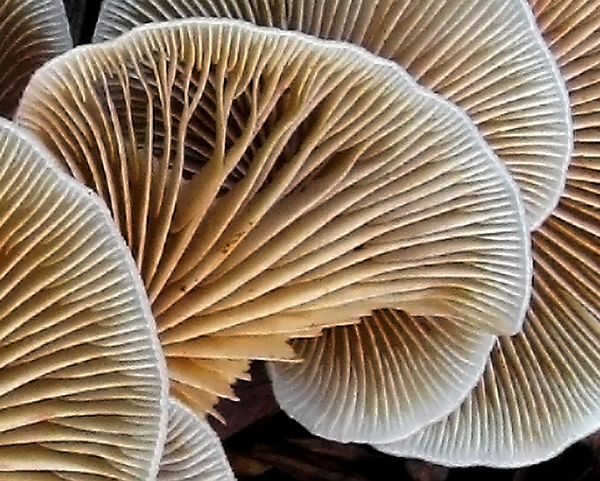
Oct 25, 2011 18:59:00 #
Thanks Bob. I forgot to mention that some compact cameras can take excellent macro shots, with lots of depth of field, so the whole insect or flower is sharp.
Oct 25, 2011 18:49:24 #
When I took up photography again after a two decade hiatus from film SLRs, I did not want to be hauling around a big camera and a bag full of lenses and filters again, so I started out with a 3 mp digital P&S, going through a series of them by Canon, Panasonic, Nikon and Samsung. Pretty soon I was hauling around a big sturdy tripod to improve my shots. Which is kind of counter productive.
Today I am hauling around a big DSLR and a bag with lenses, etc. My wife sticks with her Kodak superzooms, and take photos as good or better than mine (or so she thinks).
Today I am hauling around a big DSLR and a bag with lenses, etc. My wife sticks with her Kodak superzooms, and take photos as good or better than mine (or so she thinks).
Oct 25, 2011 18:27:28 #
By compact camera, I include simple point-and-shoots, and the more sophisticated superzooms. They all have in common a much smaller sensor than a DSLR. Even though many have a high pixel count, up to 10, 12 megapixels or more, the quality of the images needs something to be desired in terms of digital noise, lens distortions and resolution in comparison to a late model DSLR.
1. Shoot at your lower ISO settings (50 to 100). Noise (looks like film grain) and the more bothersome color-noise (specks of magenta and green, etc. in shadow areas) increases rapidly as you increase your ISO settings. If you use AUTO, the camera will decide on the ISO setting. (Some cameras allow you to set a range of ISO's the camera will select from.) If you use PROGRAM, you can set the ISO, and that will give you some control over the quality, if your P&S does not have Aperture priority, Shutter priority or Manual settings.
2. Use a tripod or some solid support for important shots. While this is counter-intuitive for those of you who love P&S's because of their pocketability, (and ability to simply point and shoot) it will improve the quality of your low light shots. Another advantage of a tripod is that, for many shots, you can avoid using the on-camera flash, with it's quick light fall-off and tell tale shadows.
3. Learn to edit your images using imaging software. You can use it to level the horizon , correct perspective, crop creatively, adjust exposure, white balance, color, contrast, saturation and sharpness, and with some programs (Photoshop CS2 and higher for example) correct lens distortions such as barrel and pincushion distortion caused by the zoom lenses.
4. Optimal exposure is important to avoid excessive noise caused by trying to correct over or underexposed images. To ensure the optimal exposures, use your camera's bracketing feature which will take three shots in rapid succession at three different exposures, as metered, from 1/3 to 1 stop above and below. If your camera supports RAW, by all means use it whenever you can, as RAW files provide much more graphic information than Jpeg files. They do require more time to process to Jpegs though. Well worth it in my opinion.
5. Accept (and work around) the creative limitations of a compact camera such as the difficulty in getting blurred backgrounds in portraits, and close-ups (compact cameras have relatively deep depth of field at most settings), the inferior autofocus systems (tracking flying birds at long zoom settings is virtually impossible), long night-time exposures (beyond 8 or 10 seconds) and other features that DSLRs have, such as low noise levels at high ISOs allowing hand held night photography. And finally:
6. Master your compact camera. Learn all that it can do. Read your Instruction manual. Learn all you can about photography. Who knows, after you learn a lot, you may need to have a DSLR to do what you want. OR, you may decide that the advantages of small size, minimal equipment and convernience of compact cameras are right for you either all the time, or as a backup to your DSLR.
And don't forget, you can take a ocean cruise with your compact camera for the price of one good DSLR lens.
1. Shoot at your lower ISO settings (50 to 100). Noise (looks like film grain) and the more bothersome color-noise (specks of magenta and green, etc. in shadow areas) increases rapidly as you increase your ISO settings. If you use AUTO, the camera will decide on the ISO setting. (Some cameras allow you to set a range of ISO's the camera will select from.) If you use PROGRAM, you can set the ISO, and that will give you some control over the quality, if your P&S does not have Aperture priority, Shutter priority or Manual settings.
2. Use a tripod or some solid support for important shots. While this is counter-intuitive for those of you who love P&S's because of their pocketability, (and ability to simply point and shoot) it will improve the quality of your low light shots. Another advantage of a tripod is that, for many shots, you can avoid using the on-camera flash, with it's quick light fall-off and tell tale shadows.
3. Learn to edit your images using imaging software. You can use it to level the horizon , correct perspective, crop creatively, adjust exposure, white balance, color, contrast, saturation and sharpness, and with some programs (Photoshop CS2 and higher for example) correct lens distortions such as barrel and pincushion distortion caused by the zoom lenses.
4. Optimal exposure is important to avoid excessive noise caused by trying to correct over or underexposed images. To ensure the optimal exposures, use your camera's bracketing feature which will take three shots in rapid succession at three different exposures, as metered, from 1/3 to 1 stop above and below. If your camera supports RAW, by all means use it whenever you can, as RAW files provide much more graphic information than Jpeg files. They do require more time to process to Jpegs though. Well worth it in my opinion.
5. Accept (and work around) the creative limitations of a compact camera such as the difficulty in getting blurred backgrounds in portraits, and close-ups (compact cameras have relatively deep depth of field at most settings), the inferior autofocus systems (tracking flying birds at long zoom settings is virtually impossible), long night-time exposures (beyond 8 or 10 seconds) and other features that DSLRs have, such as low noise levels at high ISOs allowing hand held night photography. And finally:
6. Master your compact camera. Learn all that it can do. Read your Instruction manual. Learn all you can about photography. Who knows, after you learn a lot, you may need to have a DSLR to do what you want. OR, you may decide that the advantages of small size, minimal equipment and convernience of compact cameras are right for you either all the time, or as a backup to your DSLR.
And don't forget, you can take a ocean cruise with your compact camera for the price of one good DSLR lens.
East Bay Hills shot with a Panasonic DMC TZ3
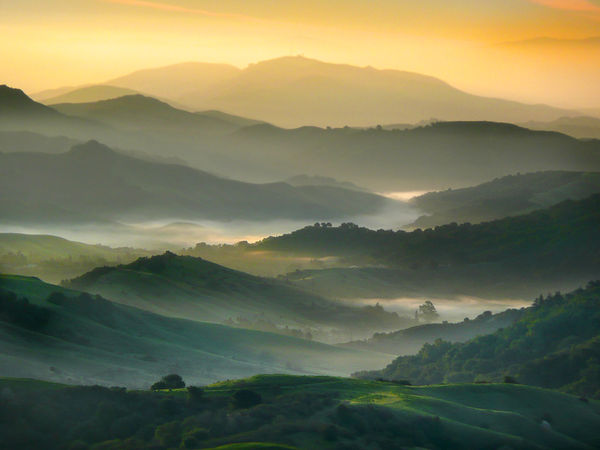
Oct 25, 2011 17:17:02 #
Let's think about the things a good P&S can NOT do well.
1. Shoot in low light at decent shutter speeds with very little noise.
2. Shoot flying birds at extreme telephoto settings (autofocus is ineffective compared to DSLRs)
3. Shoot with ultra wide lenses.
4. Shoot with polarizing filters (most of them anyway)
5. Take images with very limited depth of field.
6. And you will find that poster sized prints are not as good as from a DSLR, regardless what Ken Rockwell says.
I have taken many great shots with my 5 compact cameras, but these are the reasons I now use a Nikon D90.
1. Shoot in low light at decent shutter speeds with very little noise.
2. Shoot flying birds at extreme telephoto settings (autofocus is ineffective compared to DSLRs)
3. Shoot with ultra wide lenses.
4. Shoot with polarizing filters (most of them anyway)
5. Take images with very limited depth of field.
6. And you will find that poster sized prints are not as good as from a DSLR, regardless what Ken Rockwell says.
I have taken many great shots with my 5 compact cameras, but these are the reasons I now use a Nikon D90.
Oct 25, 2011 08:27:40 #
I also shoot exclusively in RAW. I then make the best Jpeg image, or images, I can from the RAW file. I then delete the RAW files except for the small percentage of keepers, which I save on an external hard drive. It makes no sense to me to keep all of the large RAW files that you know you will never use again.
Oct 23, 2011 11:22:02 #
I also have experienced high noise levels using a Nikon D70 (at ISO 640). Key is to use the lowest ISO you can, ISO 100 or 200. For night shots that would require a tripod.